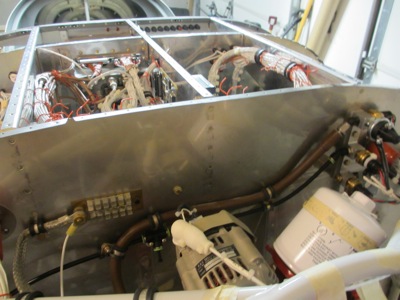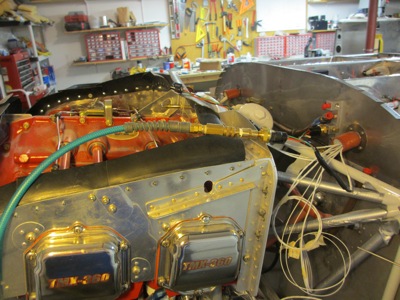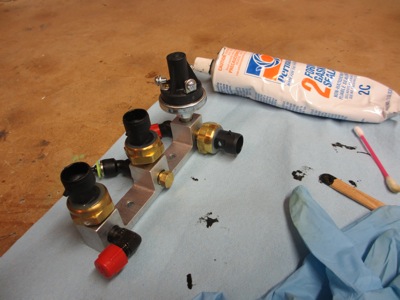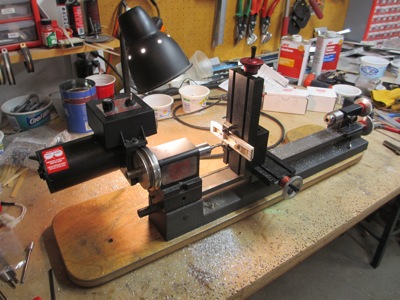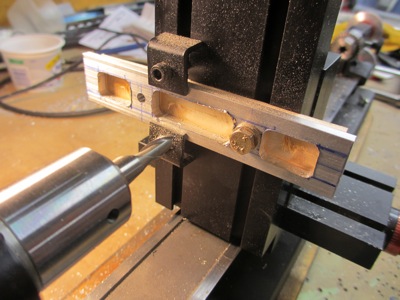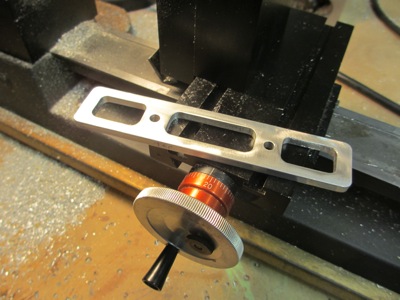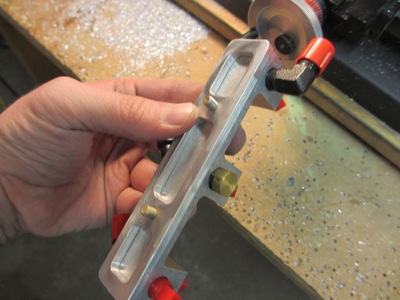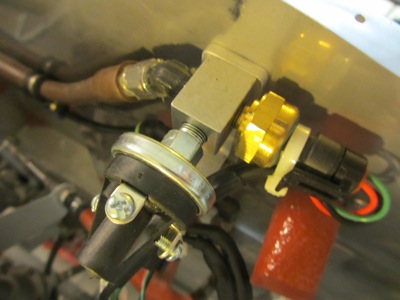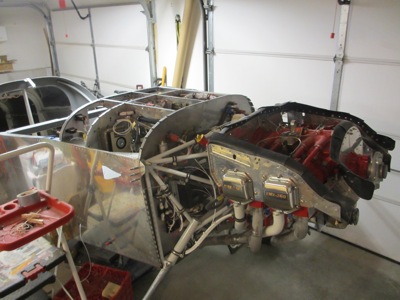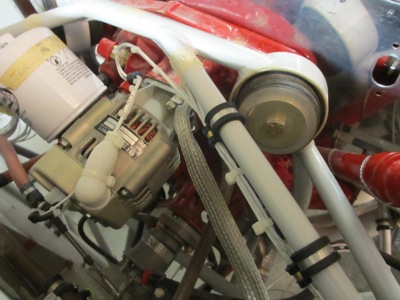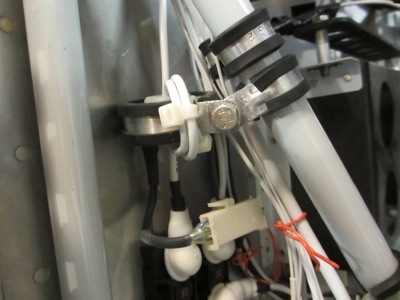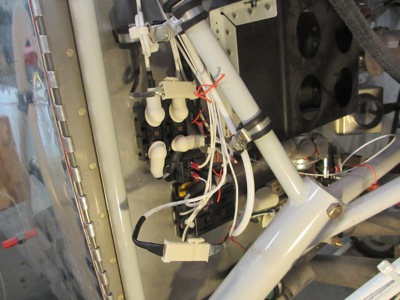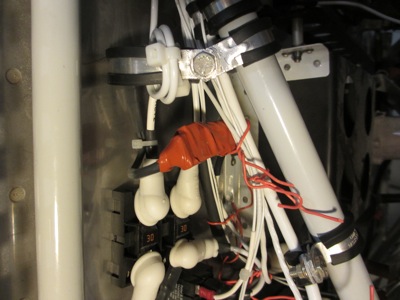A while back (several years ago, in fact) I installed a manifold pressure fitting on the firewall, using the location referenced in the plans. Fast forward to today, through several iterations of equipment selection, and I no longer have a need to bring the manifold pressure plumbing through the firewall. I do, however, need to transition from the heavy Aeroquip hose to something lighter, and also to plug the now-unnecessary hole in the firewall.
I chose to tackle both at once by modifying the bulkhead tee fitting that I previously installed through the firewall. I cut off the right angle leg, filed it flat (this was before I had a milling machine, or else I'd have used that) and tapped the hole for 10-32 threads. Then I installed a similarly threaded quick connect air fitting using Permatex #2.
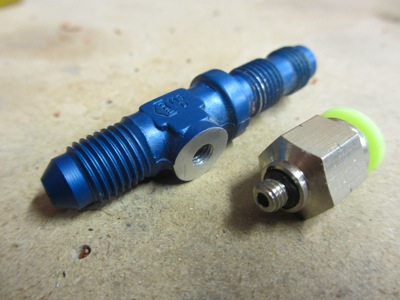
Here's the modified air fitting re-installed in the firewall. The aft side, not shown here, is blocked off with an AN929 cap. This effectively turns the former tee fitting into a firewall-mounted right-angle hose-to-tube adapter.
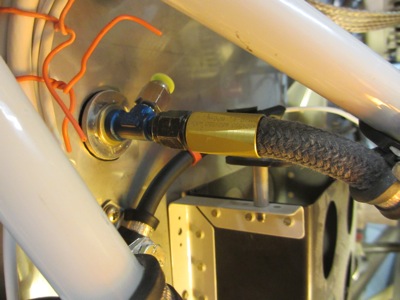
This is a wider shot of the area in question. Manifold pressure is conveyed from a port on the back on the #3 cylinder to the fitting/adapter on the firewall via a hose, which is strain-relieved via an adel clamp attached to the engine mount. This originally had two attach points; I may hook the other one up again someday if it appears necessary.
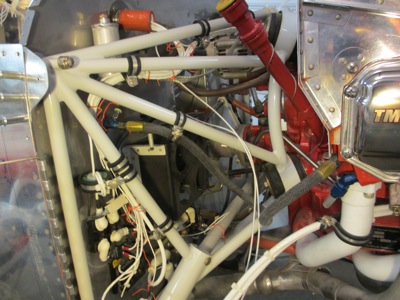
From the firewall connection, the manifold pressure hookup transitions to 1/4" nylon tube, seen here as a black stripe because the camera wouldn't focus where I wanted it.
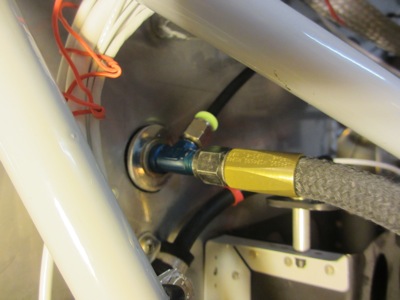
I attached a quick-connect tee fitting to the firewall using a simple aluminum tab affixed to an existing bolt hole. The middle leg of this fitting will eventually connect to the manifold pressure input on my ignition system (more on that in a future update) but for now it's just plugged. A pair of adel clamps keeps the manifold pressure tube from rubbing on the oil pressure hose and vice versa.
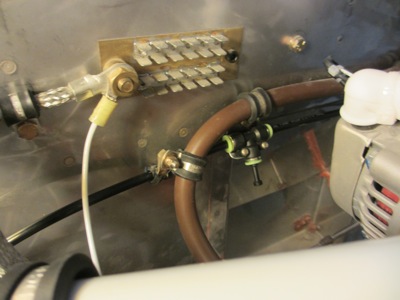
Here you can vaguely see the entire route of the black plastic manifold pressure line, from the hose transition on the starboard side, across the firewall through a tee to the sensor manifold on the pilot's side. In retrospect it's not exactly how I might have chosen to hook it up had I known I wouldn't need to bring it through the firewall, but it's not a bad arrangement regardless.
